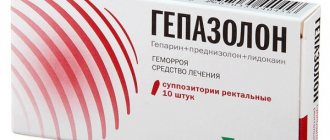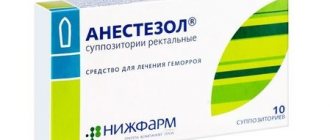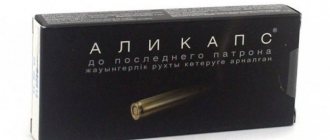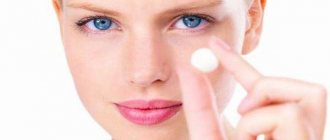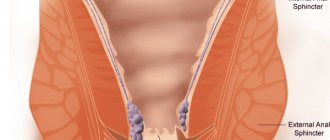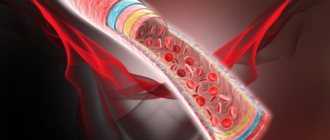Pharmacological action of Escusan
According to the instructions, Aescusan is taken for various disorders of blood flow in the veins. Since the drug contains horse chestnut extract, Aescusan has a venotonic and anti-exudative effect. Also, horse chestnut extract in the herbal medicine helps to reduce the concentration of lysosomal enzymes, which reduces the breakdown of mucopolysaccharides on the walls of capillaries. The use of Aescusan affects the reduction of vascular permeability, which prevents the filtration of water, electrolytes and low molecular weight proteins into the intercellular space.
Reviews of Aescusan say that the use of this herbal medicine reduces the feeling of heaviness in the legs, swelling, tension and fatigue.
Aescusan
Aescusan (thiamine + escin) is a herbal medicine used to normalize the condition of the blood vessels of the venous bed. Escin is a saponin isolated from horse chestnut. Preparations based on this plant have always been in demand in folk medicine. They help with varicose veins in three directions at once, eliminating swelling, reducing inflammation and increasing the tone of the venous walls. Escin also promotes the preservation of their main structure-forming element, mucopolysaccharides, in the walls of blood vessels. Under the influence of horse chestnut extract, the permeability of the venous walls decreases, which prevents the release of proteins and electrolytes into the interstitial space and prevents the development of edema. In addition to this, the drug eliminates such typical manifestations of varicose veins as heaviness in the lower extremities, itching, pain, and a feeling of fatigue. The decongestant effect of taking Escusan is comparable to wearing compression stockings. However, the latter is not entirely convenient in the summer and does not have any effect in approximately half of patients with varicose veins. As is known, this disease is chronic, steadily progressing and aggravating the condition of the blood vessels of the venous bed. In this regard, the key task of a phlebologist is to stop the development of the disease, which requires a fairly long course of medication. Aescusan is one of the most promising drugs in this area.
The experience of its use dates back more than one decade, during which the drug has gained the trust of not only doctors, but also their patients. Aescusan is available in the form of drops. The drug is suitable for long-term (2-3 months) continuous use. It is advisable to conduct several such drug courses per year. The advantage of the drug is the high compliance (adherence) of patients to treatment, amounting to 95%. The optimal time to take it is immediately before meals. Before use, the bottle of drops should be shaken vigorously. Side effects when taking Escusan are extremely rare and are limited only to dyspeptic symptoms. The only direct contraindication to the use of the drug is individual intolerance to its components. Aescusan can be used during pregnancy and lactation (in the latter case, with extreme caution due to the presence of ethanol in the drops as an auxiliary component). Deterioration in the transparency of the solution and the presence of sediment are not reasons for disposing of the drug: this is a common phenomenon that can occur during long-term storage. This does not in any way affect the effectiveness or safety. Cases of overdose with Aescusan have not yet been encountered. Sulfite-containing infusion solutions may reduce the effectiveness of thiamine, one of the active components of the drug.
special instructions
The herbal medicine Aescusan contains ethanol, its solution is about 31 percent. This fact should be taken into account when using the drug during breastfeeding. Aescusan can be used during pregnancy to treat varicose veins.
During storage, Aescusan gives a precipitate, and sometimes the solution becomes cloudy. In this case, the drug does not lose its medicinal properties and can be taken.
Aescusan solution should be shaken before taking. For successful therapy using Escusan, it is recommended to simultaneously wear special stockings or tights.
Instructions for use
Aescusan contains horse chestnut extract (escin) and vitamin B1. Together they create a stable connection that has the following functions:
- Toning – the tone of the walls of veins and large capillaries increases, which reduces their fragility and bleeding;
- Strengthening – escin acts on the walls of blood vessels, strengthening them from the inside;
- Anti-edematous and anti-inflammatory – the drug relieves swelling of soft tissues and also eliminates inflammation, reducing pain in a matter of minutes;
- Enhancing metabolism - this function allows you to normalize blood flow in the place where it is reduced, through the synthesis of adrenal hormones, which enhance the body’s work in terms of regeneration;
- Antiaggregation activity – is to reduce the risk of blood clots.
The medicinal effect is achieved through the following complex chemical reactions and effects on the body:
- blocking the breakdown of mucopolysaccharides in the walls of the vessel;
- stimulation of hormone production;
- synthesis of prostaglandins;
- decreased permeability of vascular walls.
Aescusan helps strengthen the walls of blood vessels , normalize blood flow in them, relieve inflammation and pain, and also make the blood more liquid so that it does not stagnate and does not form hemorrhoids.
This is a very effective medicine, which, due to its diverse range of effects, is used not only in proctology, but also in the treatment of varicose veins of the extremities.
The drug has a whole range of effects , improving not only the vessel and its capacity, but also the quality of the blood. The blood becomes less thick, which facilitates its natural passage through the inelastic walls of blood vessels. Aescusan is approved for long-term use because it does not cause addiction or significant adverse reactions.
Indications
Aescusan is used in the treatment of diseases associated with disorders of the vascular system. It is effective in the following cases:
- treatment of venous dilatation of the veins of the extremities;
- swelling of the limbs and the appearance of the first signs of varicose veins (spider veins, lumps);
- treatment of hemorrhoids;
- elimination of postoperative syndrome associated with the occurrence of soft tissue atrophy, seizures and blood flow disorders.
The drug is also effective in complex therapy, as it combines well with other medications. It is used in the treatment and prevention of stroke, atherosclerosis and thrombophlebitis, strengthening vascular walls and making them more elastic.
Composition and release form
Aescusan is available in 6 forms, which provide the opportunity to influence the disease not only locally (creams and ointments), but also externally, providing a general strengthening effect for the vascular system:
- White coated tablets Contains 20 mg of active substance (escin). Packed in blisters of 10 pieces each. The pack contains 2 blisters (20 tablets);
- Long-acting tablets (Retard) . They have an increased concentration of escin up to 50 mg. Prescribed for the treatment of more advanced stages of varicose veins and hemorrhoids;
- white or yellowish dragee Recommended for use as a prophylaxis for varicose veins throughout the body;
- Drops - a liquid form containing the daily dose, facilitates the administration and absorption of the drug, and also has a rapid effect, instantly relieving pain and swelling;
- Gels and creams - used for external use. They allow you to influence an enlarged vein from the outside. Use in complex treatment is irreplaceable. Escin in creamy form has insignificant dosages, which, together with taking another form of this drug, will not cause an overdose.
Which form of Aescusan to use depends not only on the type of disease, its stage and individual characteristics of the patient, but also on the doctor’s recommendations, which must be strictly adhered to.
It is not recommended to use this drug on your own, as it may cause the development of unwanted side reactions.
Directions for use and doses
The dosage depends on the concentration of the main active ingredient in the medicine:
- Aescusan drops are taken 15-20 drops, 2 or 3 times a day, immediately before meals. It is recommended to shake the bottle before taking it, as escin can settle to the bottom and form a crystalline precipitate. It is better to dissolve the drops in a small amount of water to make their reception more comfortable;
- Aescusan tablets are taken 1 tablet 2-3 times a day, 20-30 minutes after meals. Drink plenty of warm water;
- Extended-release tablets are prescribed 1 piece once a day, gradually increasing the dosage to 3 times a day;
- , Aescusan tablets are taken 1 tablet 1 time per day, after the main meal, with warm water;
- Gels and creams are applied 2-3 times a day to clean skin. If used for rubbing into the rectum, it is recommended to give a cleansing enema for better absorption.
A more precise dosage is selected by a specialist who prescribes the duration of the course of treatment.
On average, when treating varicose veins and hemorrhoids, the course of treatment can reach three months, after which a short break is taken.
Aescusan is not addictive, but is not recommended for children under 12 years of age.
The drug is well absorbed from the gastrointestinal tract, reaching maximum concentration in the blood after 5-8 hours. During metabolism, most of the breakdown products are excreted in bile. Unchanged metabolites are excreted in only 5% volume.
Interaction with other drugs
In most cases, Aescusan combines well with other drugs, which allows it to be used in complex therapy.
However, it is not recommended to combine simultaneous use with:
- cephalosporin antibiotics – have a negative effect on escin, destroying its structure, thereby reducing the effectiveness of treatment to zero;
- aminoglycosides - are able to come into direct contact with escin, enhancing its nephrotoxic effect;
- sulfite solutions - reduce the effectiveness of escin by reducing its concentration in the blood and breaking down into metabolites.
Pharmacological properties of the drug Escusan drops
The main component of horse chestnut seed extract, escin, has an antiexudative and venotonic effect in various experimental models. The exact mechanism of action is not known. There is evidence that extract from horse chestnut seeds reduces the concentration of lysosomal enzymes, thereby preventing the breakdown of the glycocalyx (mucopolysaccharides) in the walls of capillaries. Due to a decrease in vascular permeability, micromolecular proteins, electrolytes and water are not filtered into the interstitial tissue. Compared with placebo, pharmacological studies showed a significant reduction in transcapillary filtration, and in randomized double-blind studies and crossover studies, a significant reduction in the severity of symptoms of chronic venous insufficiency (fatigue, heaviness, tension, itching, pain and swelling of the lower extremities). After administration of 50 mg of escin, after 2.35 hours, the maximum level of the drug in the blood plasma is reached - 25.31 ng/ml. The half-life is 19.87 hours. 0.11% of the extract taken orally is excreted in the urine in the form of escin. Plasma protein binding is 84%.
Indications for use of Aescusan
The instructions for Escusan recommend taking the drug for the following types of diseases and ailments:
- For chronic venous insufficiency of post-thrombotic and varicose origins, as well as for various complications during the course of the disease, including diseases associated with a functional disorder of the blood supply;
- For cramps and swelling in the calf muscles;
- If you feel pain and heaviness in your legs;
- For hemorrhoids;
- For varicose veins.
Side effects
Most often, adverse reactions are provoked by the liquid form of the drug - drops. This is due to the presence of ethyl alcohol in their composition, which can irritate the gastric mucosa, causing nausea, vomiting and pain in the epigastric region.
A less common side factor is the presence of an allergic reaction. It is caused by individual intolerance to one or more components of the drug. Appears as:
- itching of the skin;
- rash and swelling of soft tissues;
- anaphylactic shock and angioedema.
The latter manifestation is the most dangerous, as it can cause death.
Contraindications
The main contraindications to taking Escusan are:
- peptic ulcer of the gastrointestinal tract;
- individual intolerance to components;
- impaired functioning of the kidneys and liver;
- childhood.
During pregnancy
Approved for the treatment of varicose veins and hemorrhoids in pregnant women, but only in the second and third trimesters. Dosages and duration of treatment are selected individually by the attending physician.
Overdose
If for some reason the dose recommended by the doctor was exaggerated, the patient may experience the following symptoms:
- nausea and severe vomiting;
- dizziness and loss of consciousness;
- a sharp decrease in blood pressure;
- fever and profuse sweating.
If an overdose is diagnosed, it is recommended to rinse the stomach and give the patient a sorbent. It is also important to ensure that you drink plenty of fluids, which reduces the concentration of the substance in the blood and also accelerates the elimination of formed toxins.
